Category: Brain
-
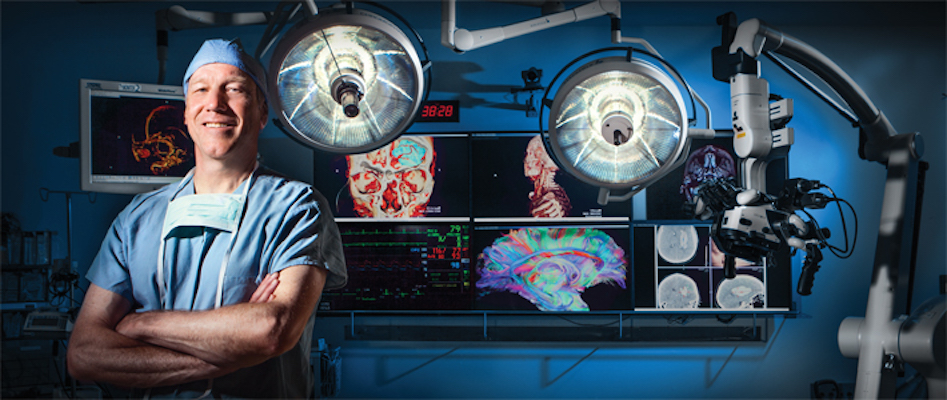
Virtual Reality in neurosurgery planning
UCLA Neurosurgery, led by Neil Martin, is using VR in surgery planning, integrating the Oculus Rift with Surgical Theater’s 3D “SNAP” surgery navigation device. (See ApplySci’s April, 2014 description of Surgical Theater’s technology.) The hope is to be able improve precision and outcomes, and decrease surgical time. The VR scene is based on patient CT and MRI scans,…
-
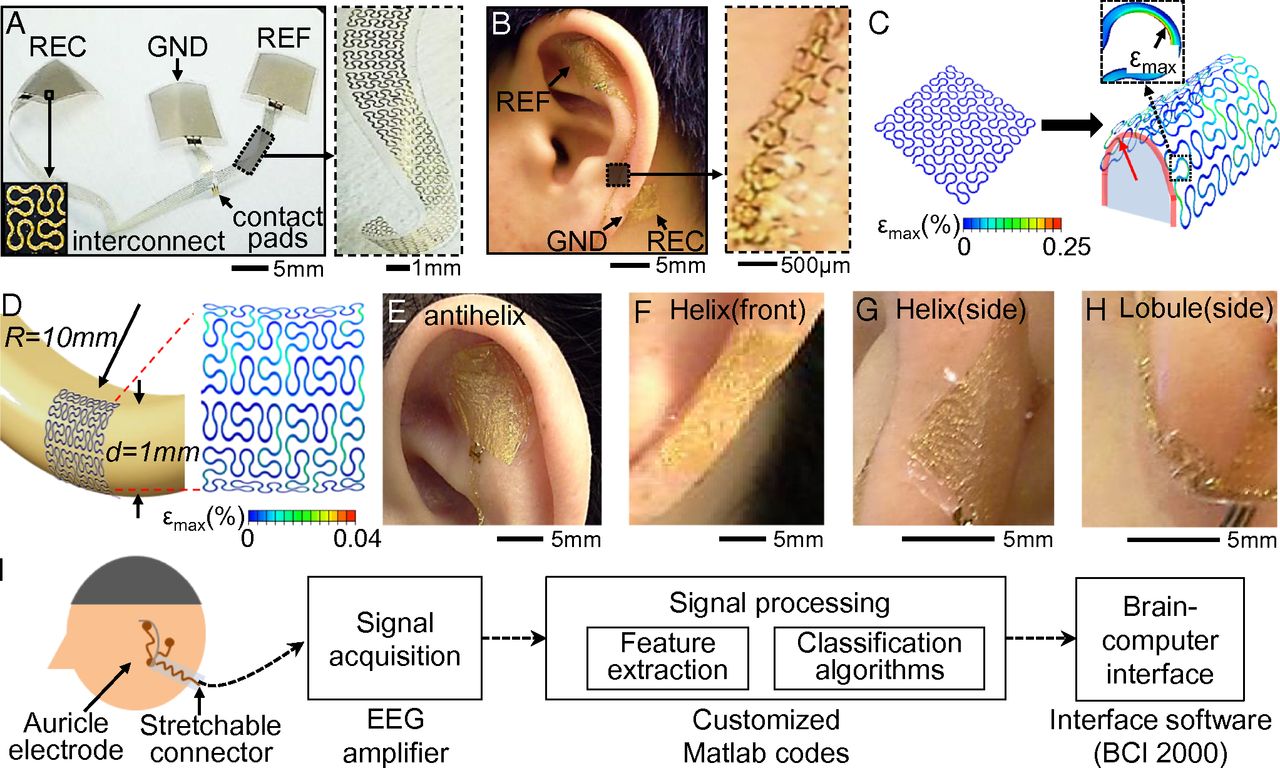
Discreet EEG sticker monitors brain activity
University of Illinois professor John Rogers has made another breakthrough in flexible medical electronics. His team has created an EEG system that sticks to the skin behind one’s ear to monitor brain activity. The miniature, lightweight, gold electrode device sticks to the skin without adhesive, and can be worn continuously for 2 weeks. While not yet…
-
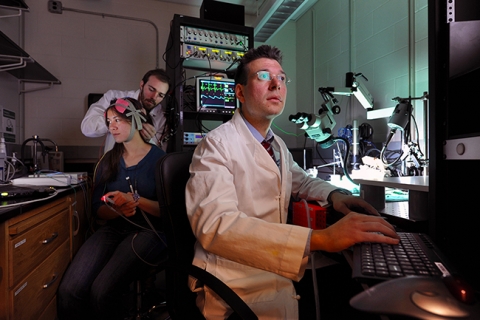
Alpha wave oscillation stimulation studied for depression
UNC‘s Flavio Frohlich used low doses of electric current to boost creativity by enhancing alpha wave oscillations. His goal is to to help people with neurological and psychiatric illnesses, as some depression patients have impaired alpha oscillations. His Cortex paper showed EEG observed alpha wave oscillation enhancement using a 10-Hertz current run through electrodes attached to the scalp. Frohlich…
-
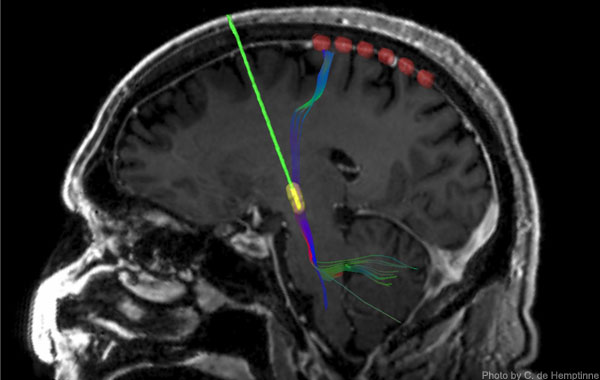
Study: DBS reshapes neural circuits
UCSF professor Philip Starr published a paper suggesting that Deep Brain Stimulation works by reducing overly synchronized motor cortex activity. He believes that this explains why surgically implanted electrodes improve movement, tremor, and rigidity in Parkinson’s patients. Little is known about why and how DBS works. This has held back efforts to improve the therapy.…
-
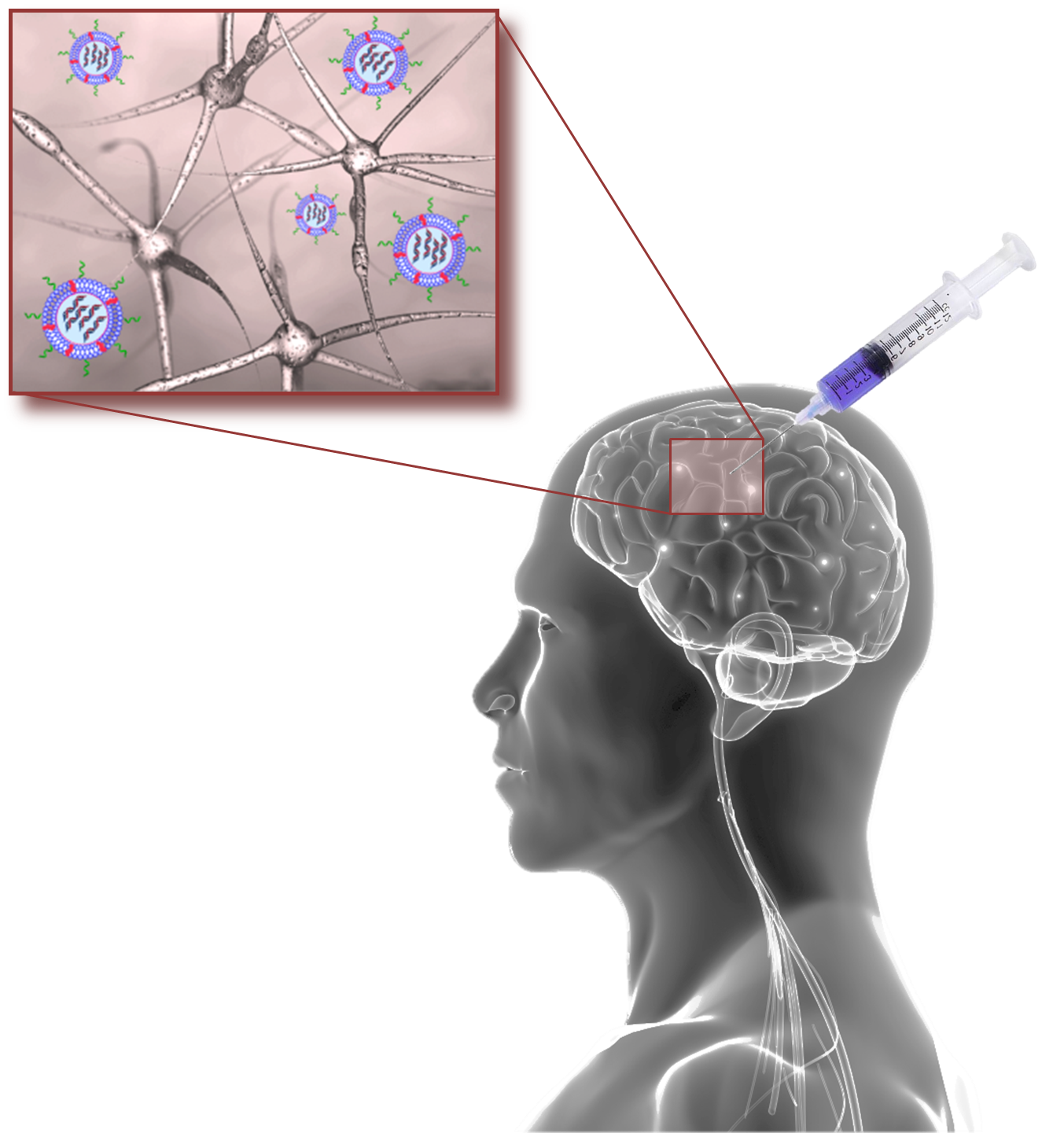
Nanoparticle treatment targets brain tumors
Tel Aviv University Professor Dan Peer is developing a nanoparticle-based process to target glioblastoma cells, previously considered untreatable. Nanoparticles were injected into tumors, acting as the drug delivery system. Nucleic acid, with interference RNAs, attached to receptors expressed specifically on glioma cells, and stopped the activity of a key protein that regulates the rapid reproduction of…
-

Light therapy could improve brain function in TBI, PTSD
Boston University and VA Boston Healthcare System‘s Margaret Naeser is testing the effects of light therapy on brain function in Veterans with Gulf War Illness. Veterans in a recent study wore helmets lined with light-emitting diodes that apply red and near-infrared light to the scalp. Diodes were also placed nostrils, to deliver photons to the deeper parts of…
-

Keystroke patterns to detect early Parkinson’s
Madrid-MIT M+Vision Consortium researchers used keystroke patterns to diagnose motor function impairing conditions, such as Parkinson’s disease. In a Scientific Reports paper, they described their algorithm’s ability to distinguish keystroke patterns of sleep deprived typers, and rested typers. A study of 24 Parkinson’s patients suggested that the keystroke algorithm can also distinguish people who have the disease from…
-
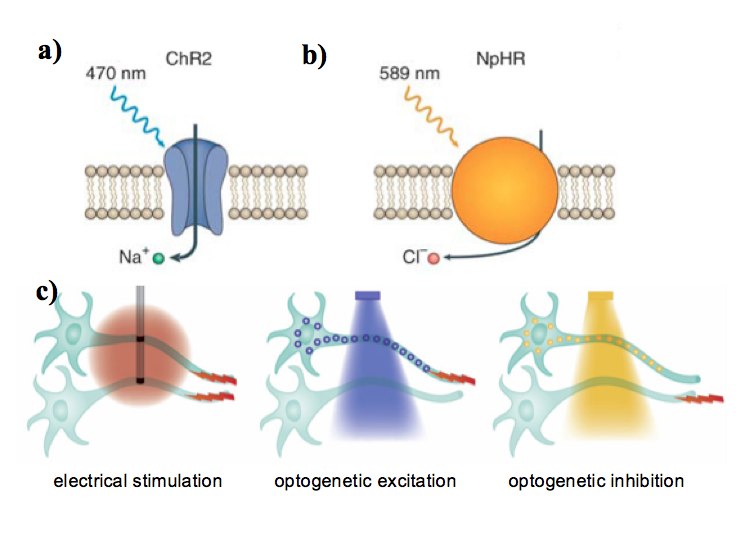
Gold nanoparticles enable optogenetics with out genetic manipulation
University of Chicago‘s Francisco Bezanilla has published a study detailing the use of targeted gold nanoparticles to allow light to activate neurons. He describes it as optogenetics with out genetic manipulation. Optogenetics has relied on genetic modification, limiting its use to few model organisms. Bezanilla previously demonstrated that normal, non-genetically modified neurons can be activated by heat…
-
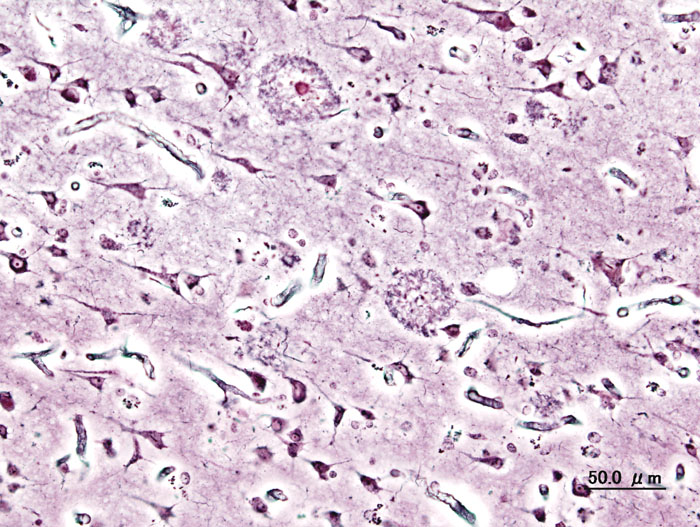
Small study shows Alzheimer’s drug significantly slows cognitive decline
A small study of an experimental Alzheimer’s drug from Biogen Idec significantly slowed cognitive decline and reduced what is believed to be brain destroying plaque in early and mid stage patients. The drug, Aducanumab, or BIIB037, was tested on 166 people, divided into five groups Each of four groups received a different dose. The fifth…
-
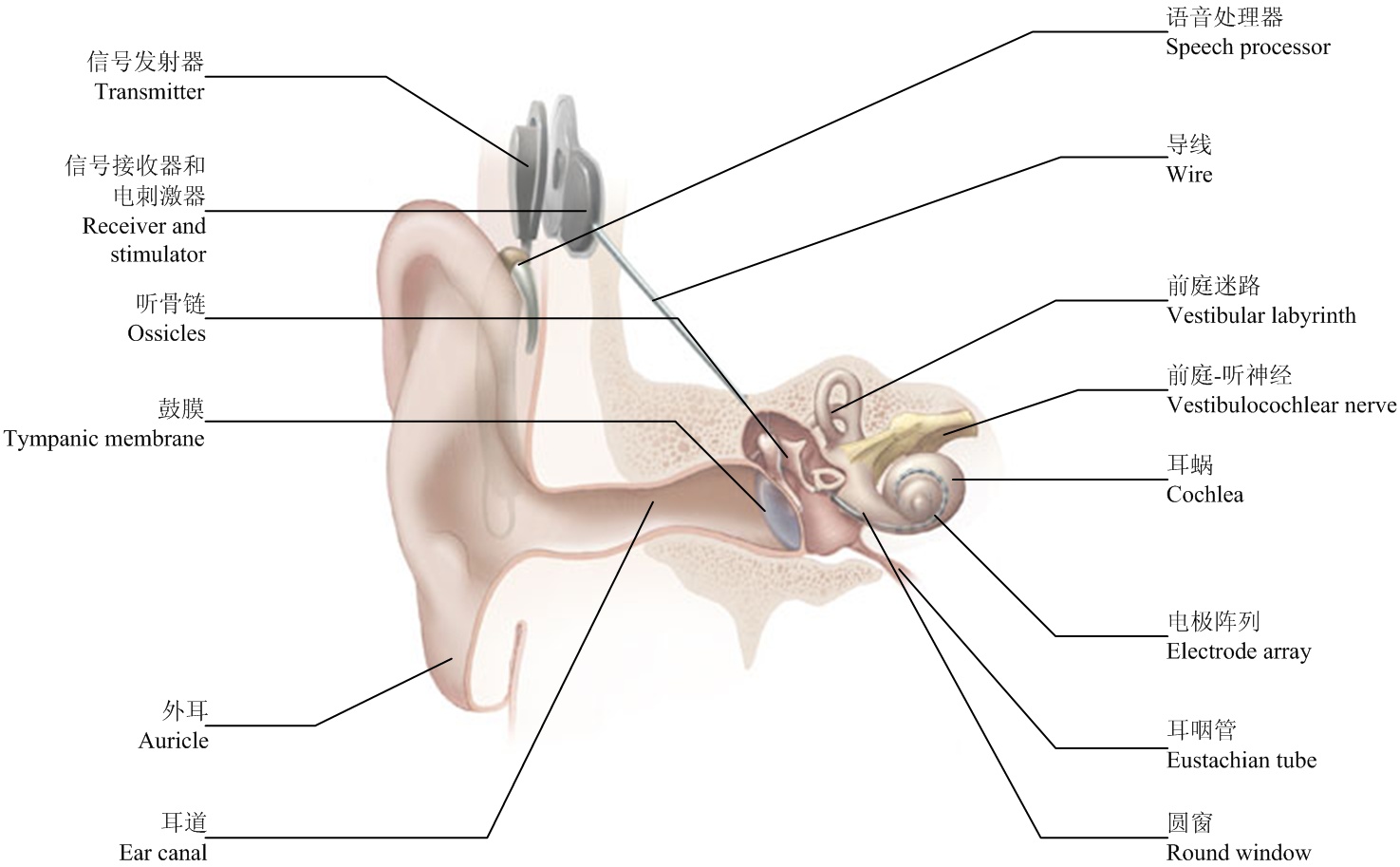
Cochlear implant could improve senior cognition, mood
Pitie-Salpetriere Hospital researchers examined 94 cochlear implant patients 3 times — before they received the device, 6 months after implantation, and 1 year after implantation. A year after the implant, (65 – 85 year old) subjects heard words more clearly, and most had improved cognition and fewer depression symptoms. Dr. Isabelle Mosnier and colleagues detailed…
-
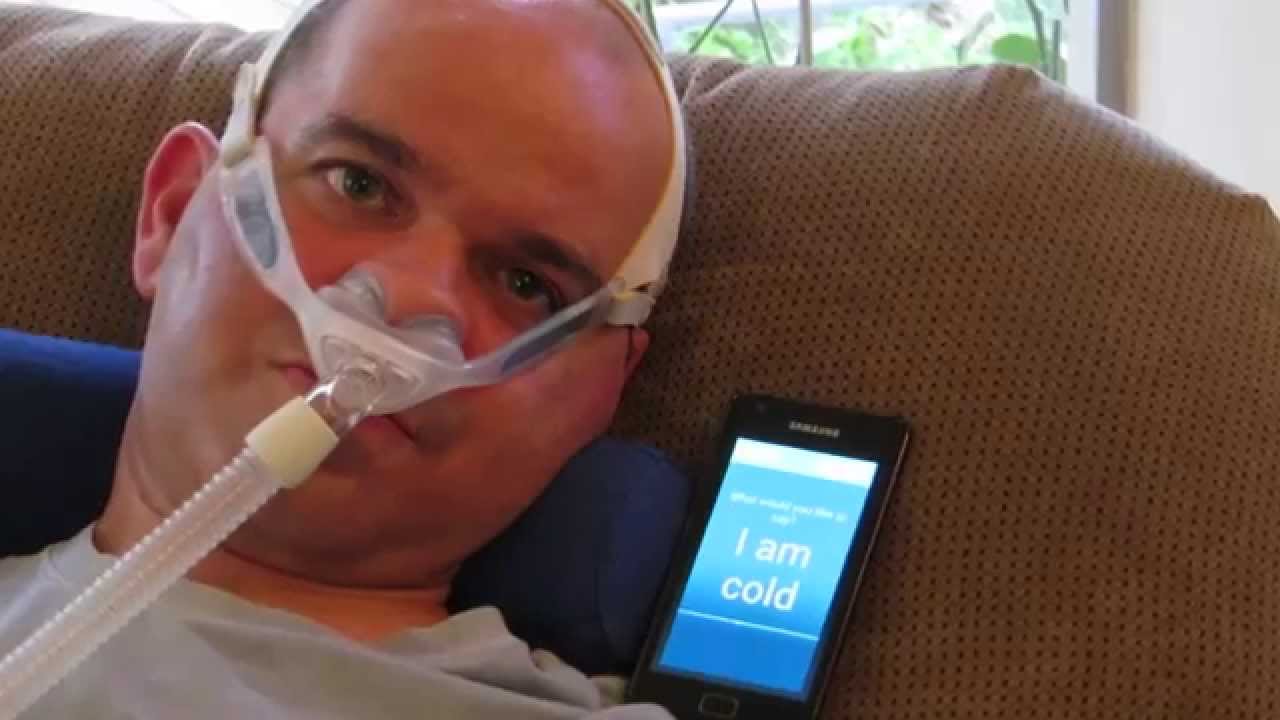
Eye controlled communication device for locked-in patients
A communication device for locked-in patients was unveiled at the BrainTech Israel conference today. Shay Rishoni is the CEO of Prize4Life, the Israel based ALS research group. He has suffered from ALS for 5 years, and is now unable to communicate. Today, on the conference stage, Shay used Hello World‘s EyeControl, a blink driven, inexpensive, automatically…
-

Video game trains brain to combat amblyopia
Game developer Ubisoft, with Amblyotech and McGill University, has released “Dig Rush,” a video game used to treat amblyopia. Amblyopia is caused when the eyes and the brain aren’t working together, because one eye is stronger or the eyes are misaligned. Patching, the traditional treatment for amblyopia, attempts to force the weaker eye to work harder…